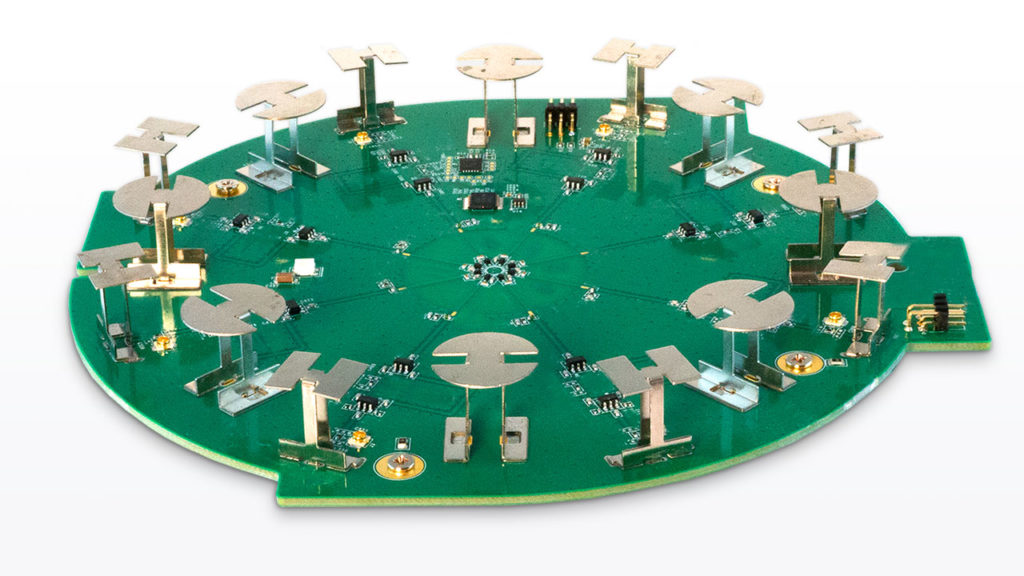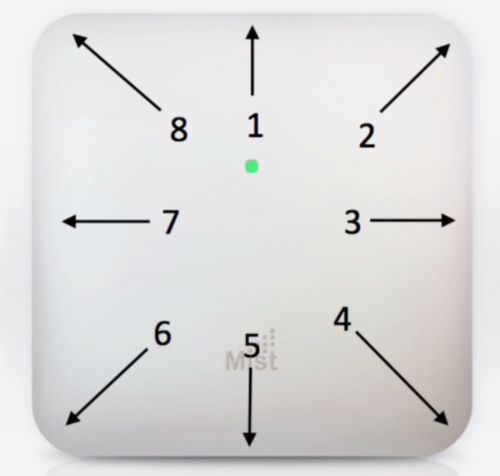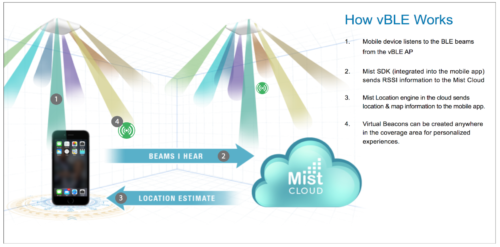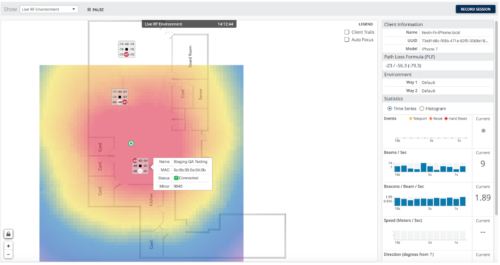The Mist patented dynamic BLE array (included in all Mist AP’s)
Mist vBLE Array
- The Mist AP has a vBLE array, which consists of a 16 Directional Antennae Bluetooth Array. Eight unique antennas are reflectors to help with directing the BLE energy outward away from the AP, and the other eight unique antennas are directional antennas that point in eight different directions, transmitting BLE energy in a flashlight-like fashion.
- To better visualize this, imagine a flashlight shining narrow beams in eight different directions.
AP Directional Beam Angle
- The best directionality comes from about a 45 degree angle, with the AP’s LED facing down towards the ground. Anything below 45 degrees acts more like a null radius, since you are directly under the AP at 0 degrees.
- This is why the higher an AP is placed, the null radius under the AP increases and the RSSI from the client decreases.
AP Beams
- Each AP is transmitting on eight unique directional beams.
- The Mist SDK on the device hears these beacons from the beams, and sends the RSSI and device sensor information back to the Mist cloud. Through either Wifi or cellular.
- The more beams your device hears the more accurate your location will be, as there is more data for the location engine to make a better location estimate.


Mist builds location from “Probability Surfaces” not triangulation. The more directional RSSI beam information your client hears, the more data for the location engine to work with creating the probability surfaces, which provides the best possible location accuracy with sub second latency.
Essentially your mobile device, with the Mist SDK, listens to the BLE coming from the beams from the Mist AP, once the Mist SDK receives the beams the SDK will then send the mobile information to the cloud where location engine will calculate and respond back with an x,y coordinate to your mobile device.

So the more beams your client sees from neighboring APs the more accurate your location will be as these probability surfaces build up. Machine Learning is constantly evaluating the Path Loss Formula (PLF) per device type and will modify the PLF over time as it learns the “optimal value/device/AP” for the actual environment. Below is an example of the probability surface where the center of the red blob is the peak of the surface and the highest probability of where you are and the blue is the least probability where you can be.

If properly deployed, the Machine Learning engine will get better and better over time has it sees more data over time so the network will be ‘constantly optimizing’ for your location experience.


